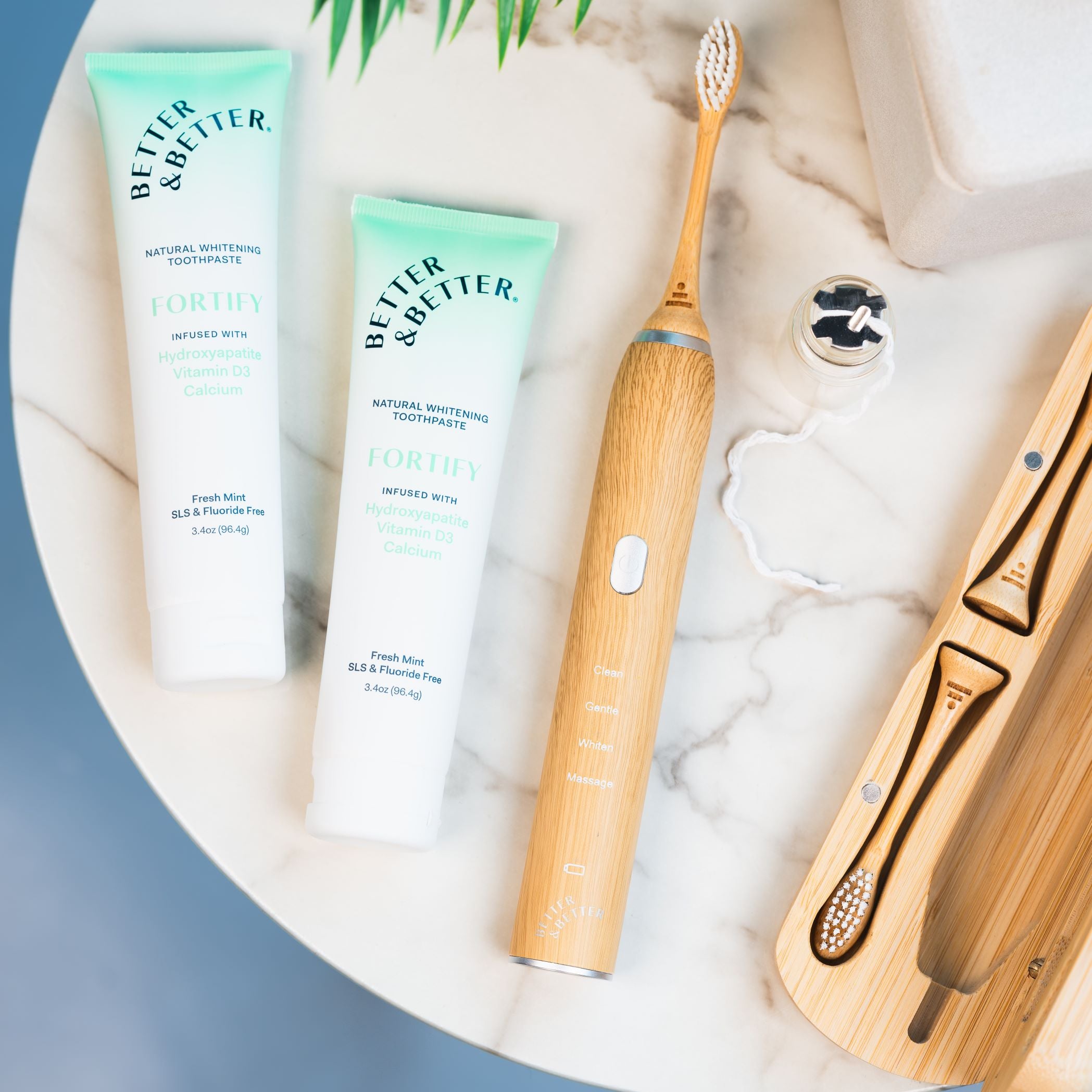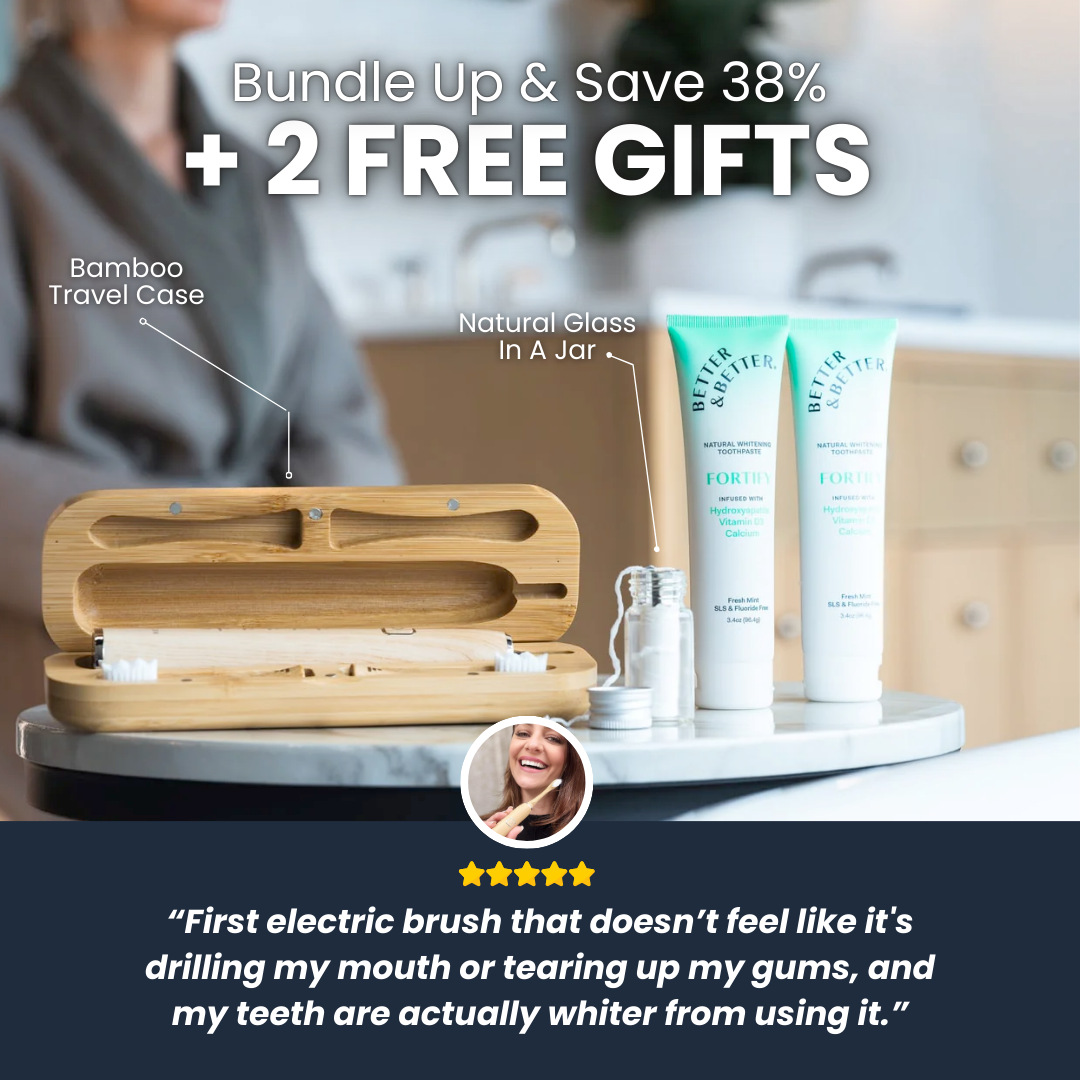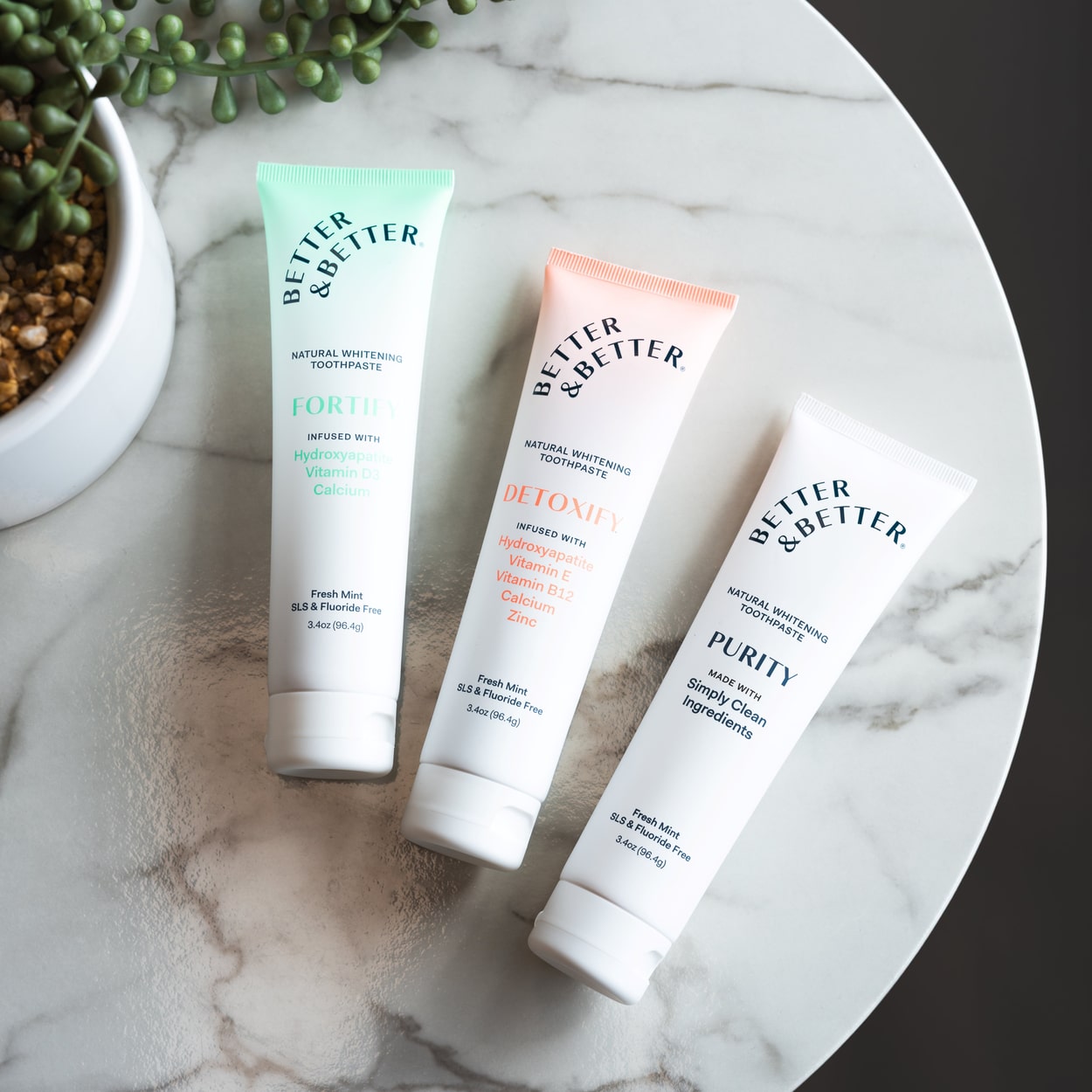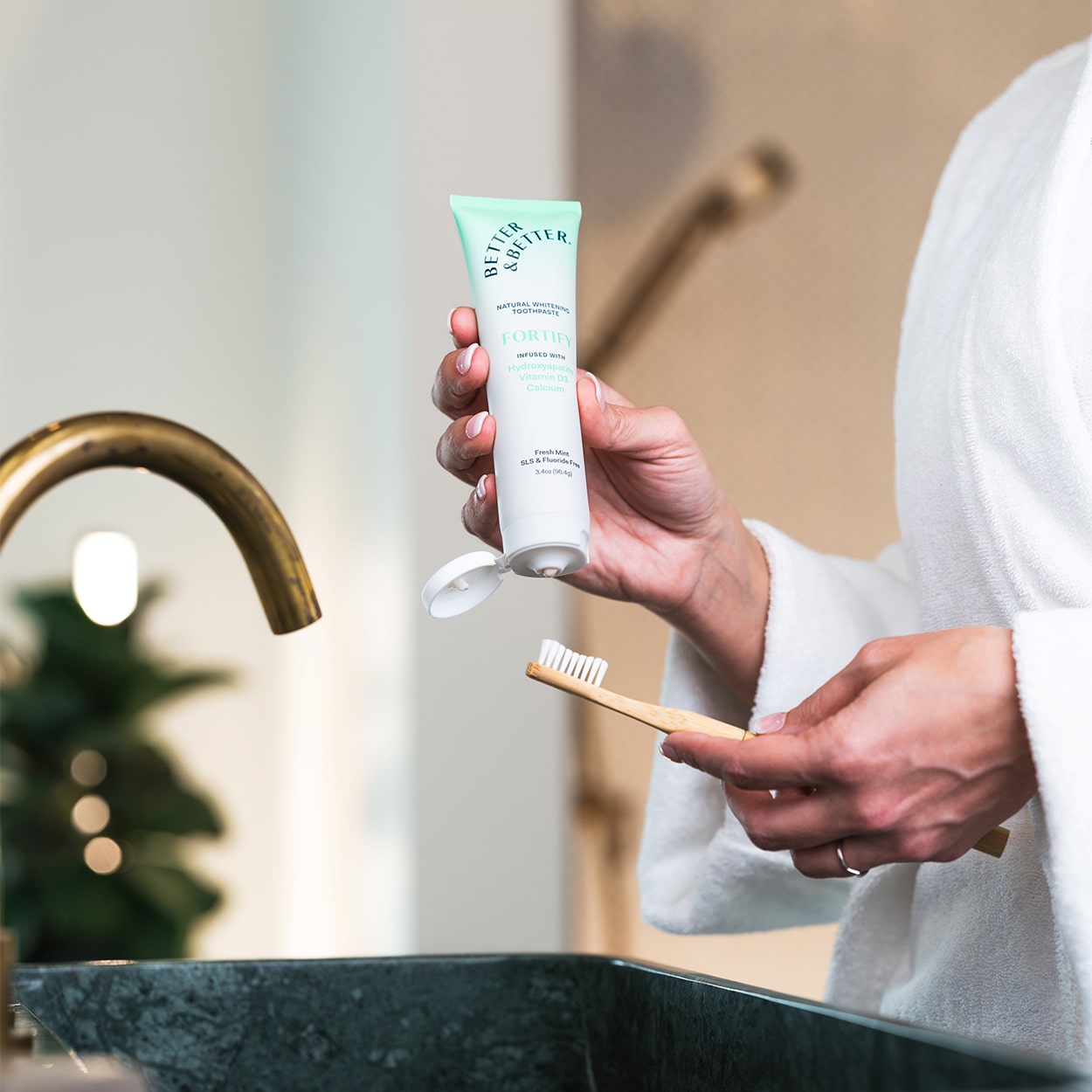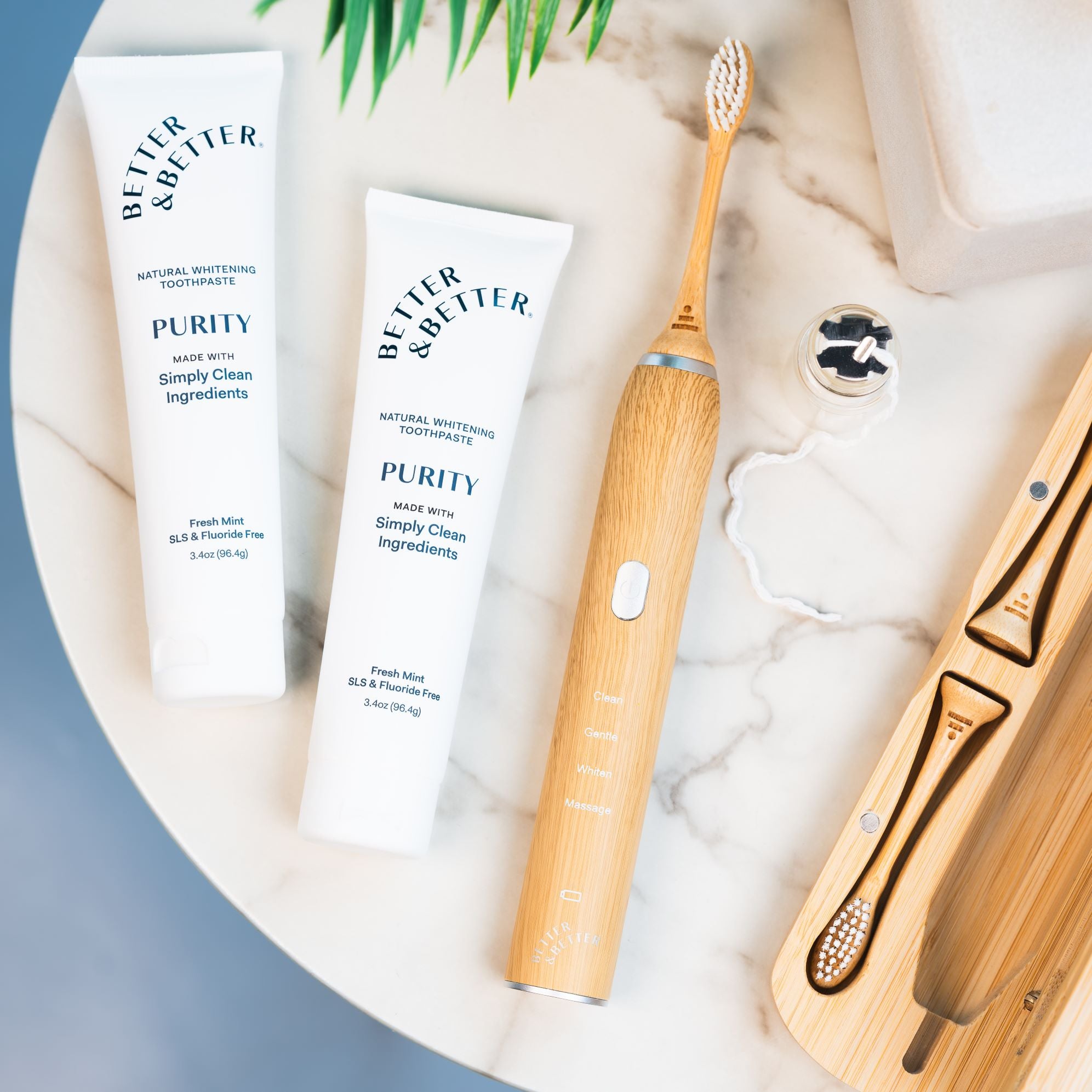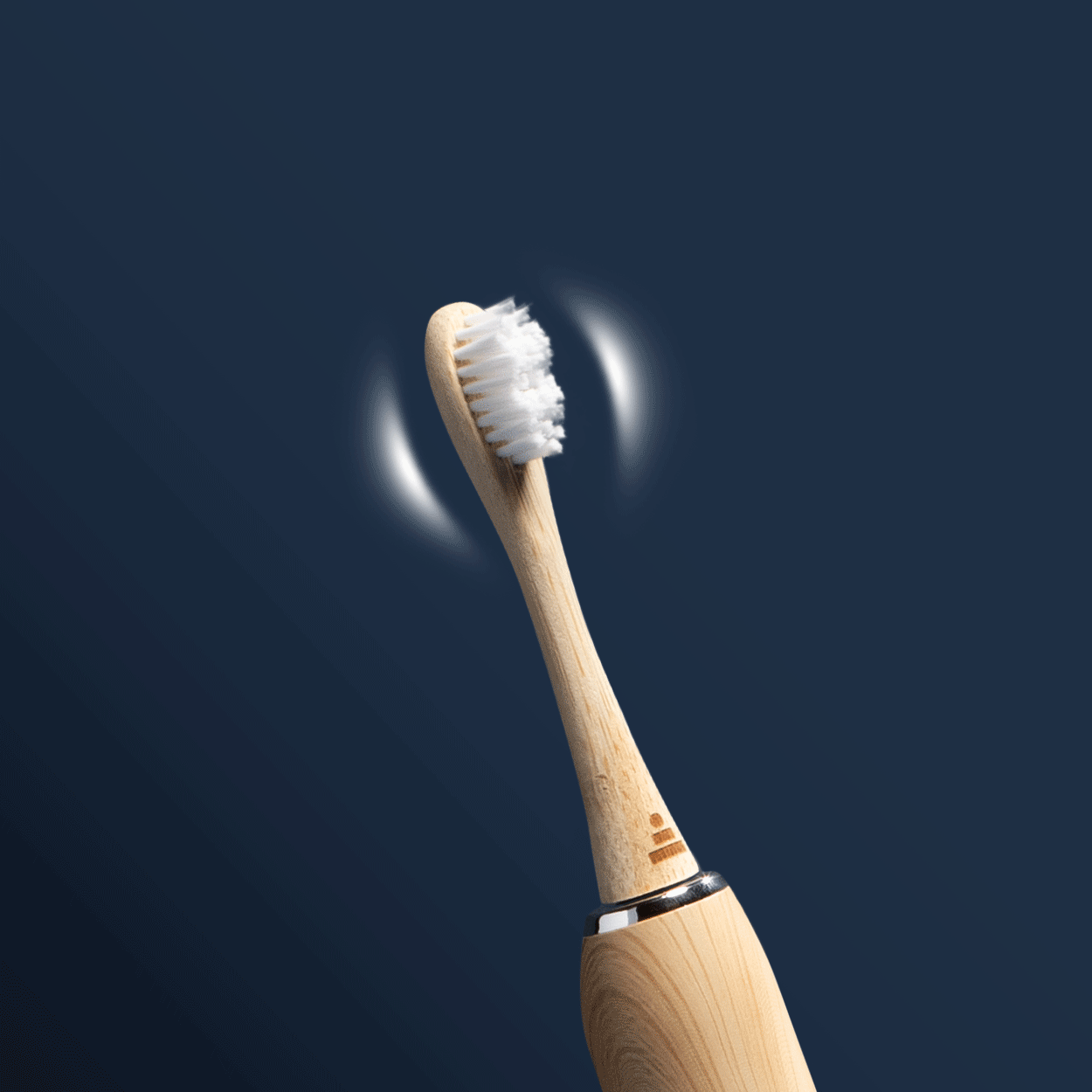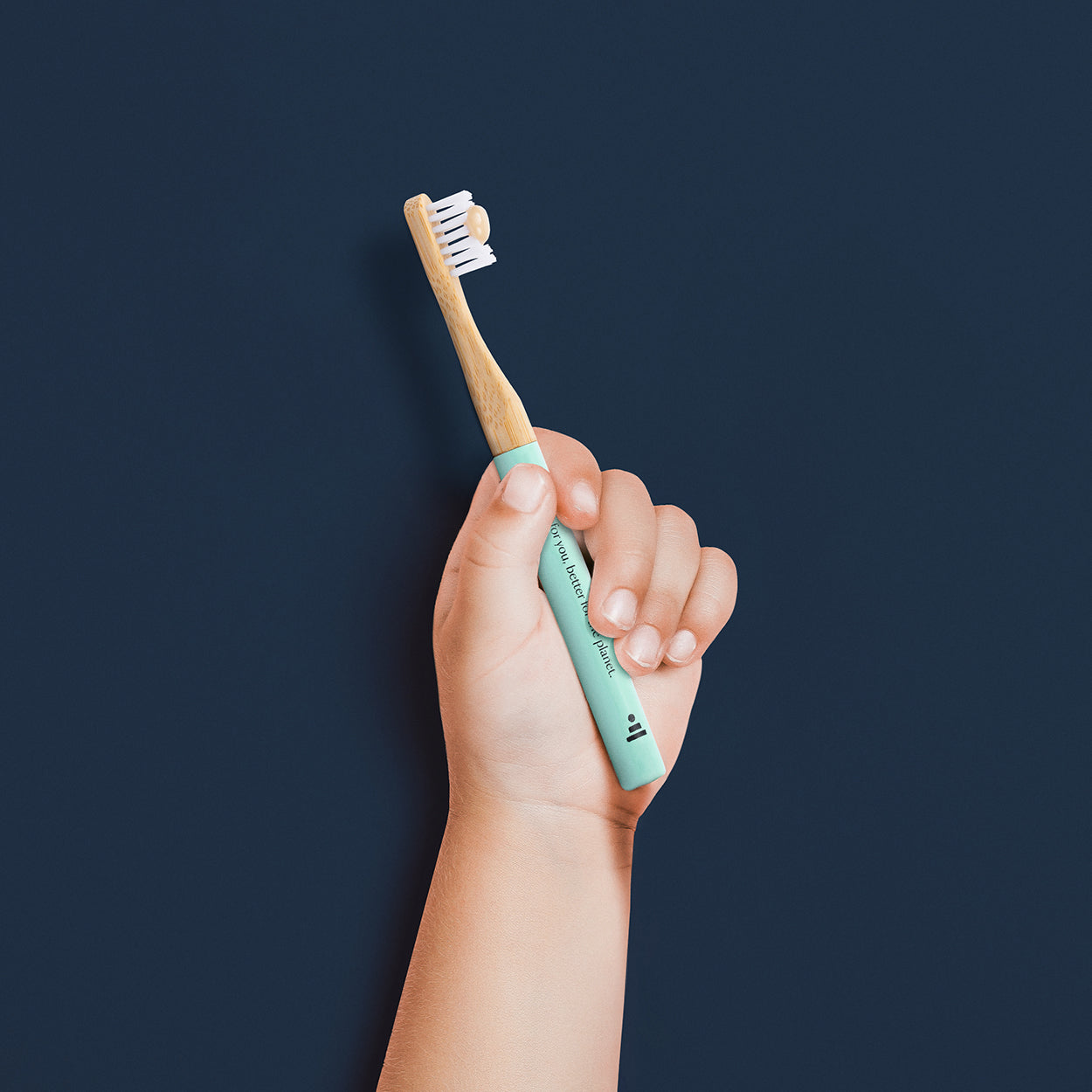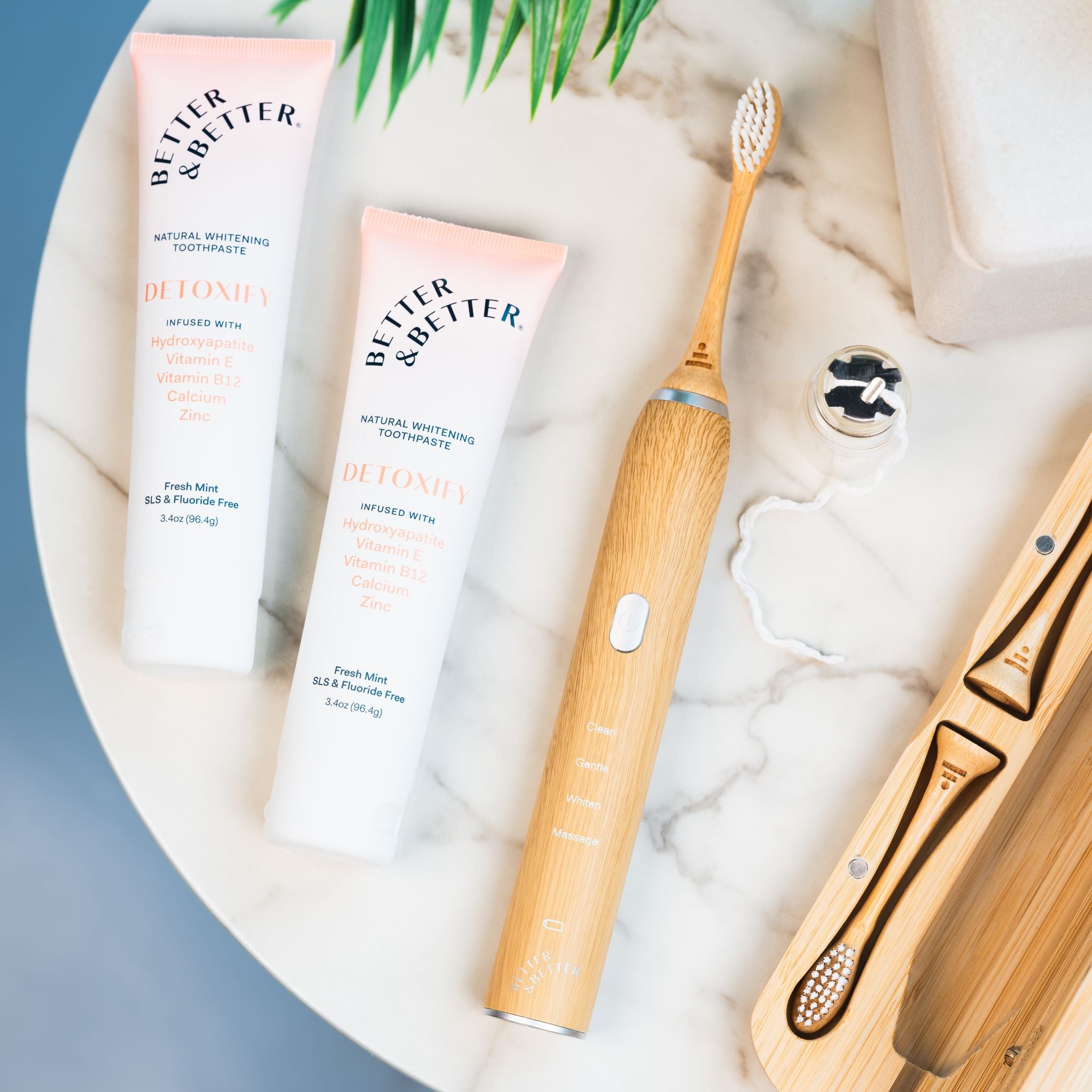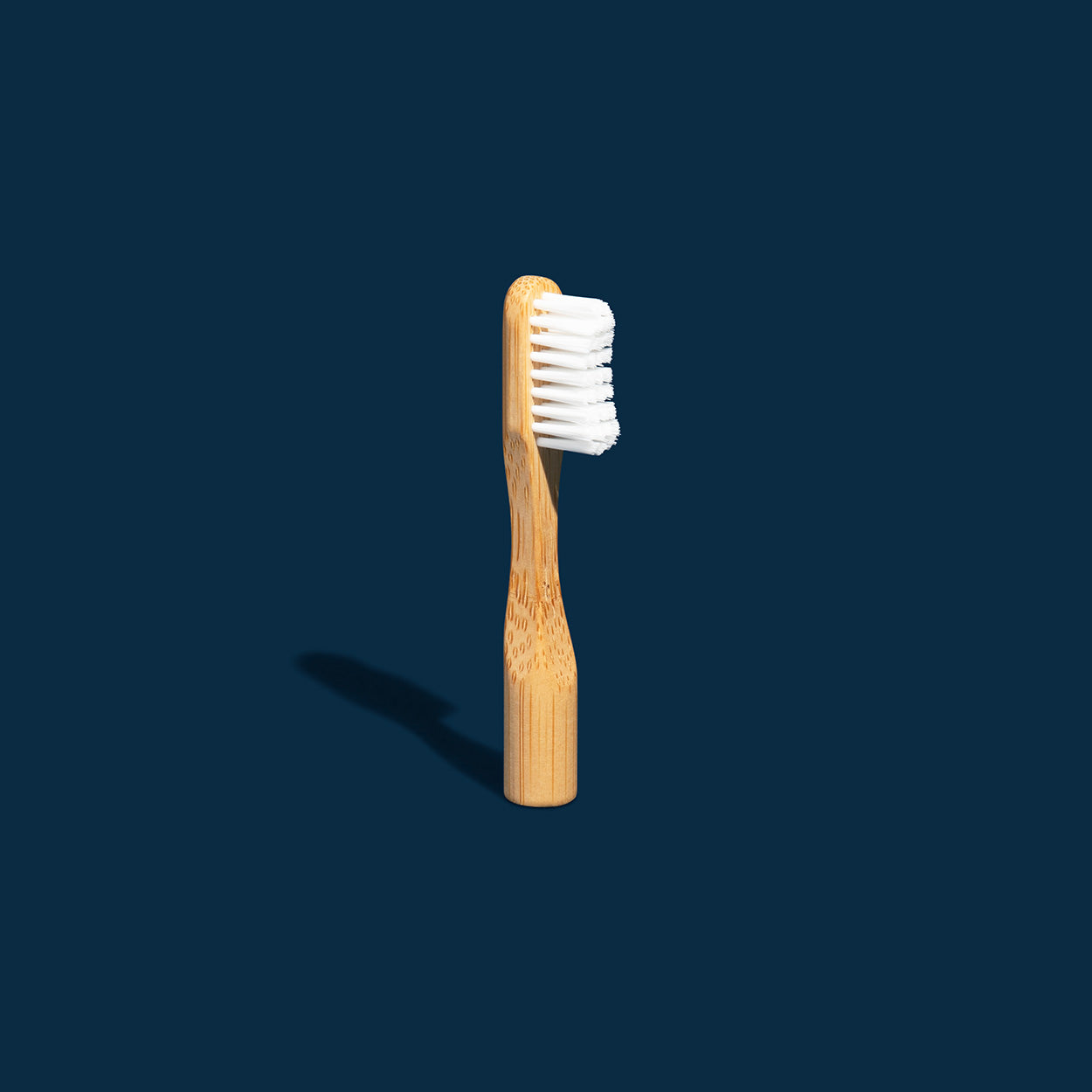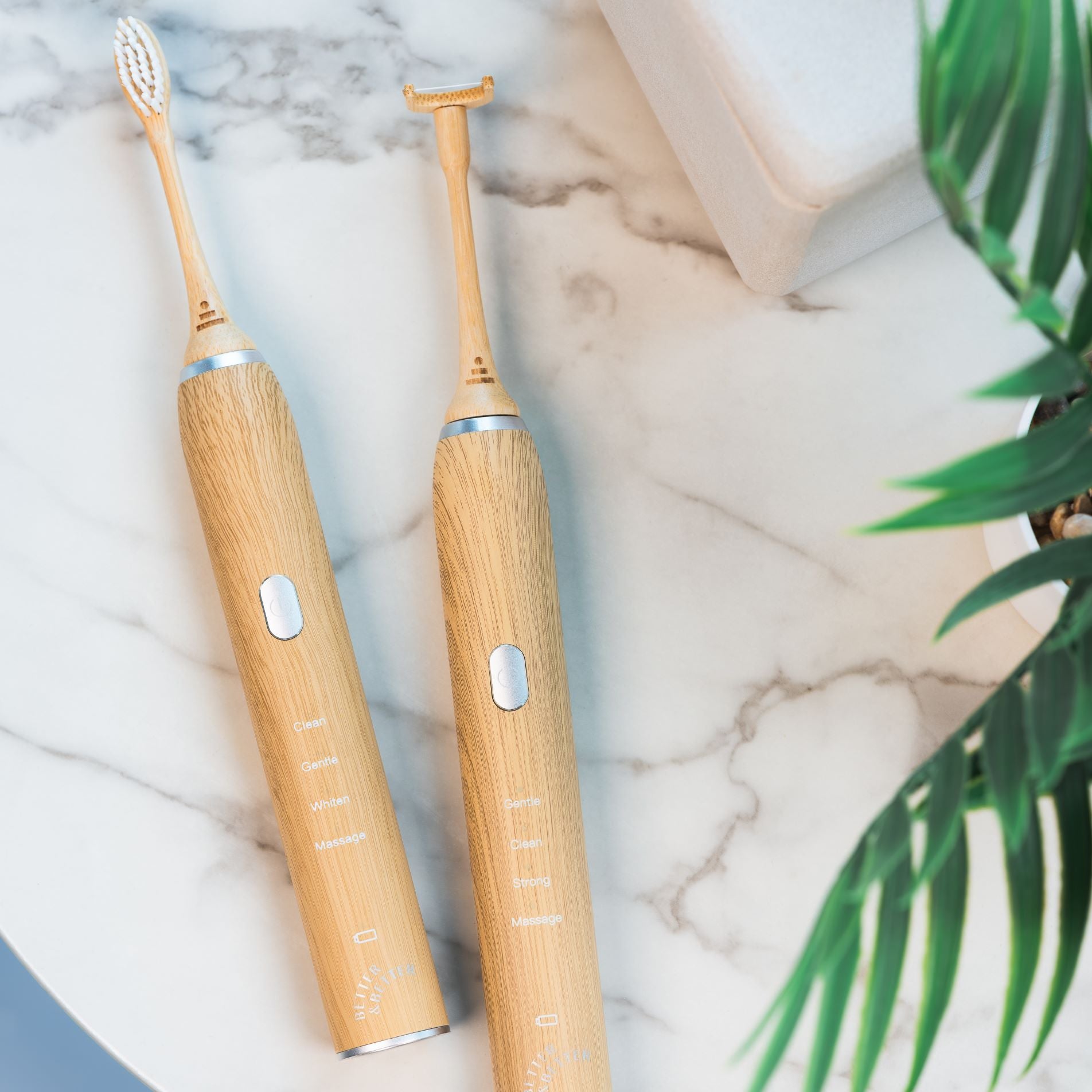FURTHER READING
Bleeding Gums When You Floss? Here’s What It Might Mean
There’s a specific kind of panic that hits the moment you floss, spit, and see pink in the sink. Even if you’re a fully functioning adult, bleeding gums still make you wonder: Is something actually wrong? Bleeding gums during flossing is very common, but not ideal—and definitely not a sign to stop flossing altogether. Most of the time, it’s your gums waving a tiny red flag: “Hey, we need some attention.” Think of this guide as your myth-busting walkthrough of what’s normal, what’s not, how to soothe the irritation, and when to bring in a professional. Plus, we’ll talk about why a smarter tool—like the Better & Better Bamboo Sonic Flosser—can make all the difference. Is It Normal for Gums to Bleed When You Floss? Short answer: It’s common, but not ideal. Bleeding usually means your gums are inflamed, and inflamed gums (AKA gingivitis) are incredibly easy to irritate. The most frequent cause? Plaque buildup from inconsistent flossing. But hormones, dehydration, mouth breathing, medications, and nutrient deficiencies can all make the gums more reactive as well. The key thing to know: bleeding is a signal, not a stop sign. Most people see bleeding when they’re just getting back into flossing, but when they stay consistent, it often improves within days. 5 Reasons Your Gums Bleed When You Floss Here are some of the most common culprits. 1. Inflammation From Plaque Buildup Plaque is basically a sticky bacteria blanket that loves to irritate your gumline. Once it builds up, the tissue becomes swollen and delicate—meaning the slightest pressure leads to bleeding. Important PSA: plaque starts turning into tartar in 24 hours, which is why skipping flossing “just for a bit” can spiral fast. 2. Flossing Technique Problems If you “snap” floss straight down between teeth, it’s like using a tiny whip on your gums. The gentle glide-and-hug technique is what dentists recommend, but most people either floss too forcefully or not deeply enough. Technique matters more than pressure. 3. The “Too Much, Too Soon” Effect If you only floss before a dentist appointment, your gums will almost definitely bleed once you restart. That irritation usually calms down within a week or two of consistent flossing. 4. Underlying Health Conditions Pregnancy hormones, diabetes, blood thinners, or vitamin deficiencies (especially C) can all make gums more reactive. In these cases, gentle daily care is even more important. 5. Mouthwash or Microbiome Imbalances Overusing strong antiseptic rinses can irritate gum tissue and disrupt the oral microbiome, leaving gums red, reactive, and quick to bleed. How to Soothe Your Gums Right Now If your gums are feeling sensitive or swollen, think of this as the oral-care equivalent of a calming skincare routine: Warm salt water rinse to reduce inflammation. Soft-bristled toothbrush only (medium and hard bristles are basically sandpaper) Skip harsh mouthwashes for a few days. Hydrate, because dry mouth = angry gums. Choose anti-inflammatory ingredients, like vitamin E (which is in our Detoxify Toothpaste). These small tweaks help tissues recover. How to Prevent Bleeding Gums Long-Term This is where healthy habits (and the right tools) make all the difference. 1. Floss Consistently, Not Sporadically The oral microbiome rebuilds daily, which means “sometimes” flossing can make gums even more reactive. Consistency is what retrains gum tissue to stay strong and flexible. Daily is ideal; every other day is the bare minimum. 2. Improve Your Technique, Or Let Tech Do It For You Most bleeding comes from how people floss, not the fact that they floss. That’s where our Bamboo Sonic Flosser becomes a game-changer: Up to 14,000 sonic vibrations per minute sweep away plaque 5× faster than manual flossing. Slim bamboo heads + plant-based floss glide gently—no snapping, no yanking, no accidental gum trauma. Four modes (gentle, clean, strong, massage) let you tailor the experience to sensitive gums. The ergonomic handle makes reaching back molars shockingly easy—usually the first place bleeding shows up. For anyone whose gums bleed easily, or for people trying to build consistency without discomfort, this is the tool that makes flossing finally feel doable. 3. Brush Before Bed Like It Actually Matters Nighttime brushing is the real MVP. Going to sleep with plaque is like letting bacteria hold an 8-hour sleepover on your gums. Not ideal. 4. Stay Ahead of Inflammation Hydrate, get enough vitamin C, manage stress, and avoid smoking/vaping when possible. Your gums are tiny but dramatic—they react quickly to lifestyle shifts. When Should You See a Dentist? Here’s when bleeding needs a professional eye: It lasts more than 7–10 days, even with consistent flossing. Gums look puffy, shiny, or tender. You notice persistent bad breath. There’s gum recession or loose teeth. Bleeding feels “out of proportion” to how gently you’re flossing. Pregnant? Monitor bleeding closely—pregnancy gingivitis is very real. Bleeding Isn’t a Stop Sign; It’s a Signal Flossing shouldn’t hurt, and bleeding isn’t something to ignore. But it’s also not a reason to panic. With a little consistency, a gentler approach, and tools that support your mouth instead of irritating it, gums bounce back surprisingly fast. If you’ve been avoiding flossing because of bleeding, consider making the switch to a smarter (and kinder) flossing routine—especially with a tool designed for sensitive gums.
Learn moreWhat Morning Breath Reveals About Your Body
Every morning, millions of people wake up in the same small panic: a sudden awareness of their own mouth. There’s the tongue film. The stale, slightly metallic taste. The impulse to mumble “don’t come too close” before coffee. Morning breath is one of those mundane realities that still feels faintly shameful. But what is it, really? Why does it happen to everyone, and what separates it from regular bad breath—the kind that a mint might mask but not cure? Ahead, we’ll explore what this small, embarrassing phenomenon says about how our bodies function when we’re asleep. What Is Morning Breath? Morning breath (scientifically, “morning halitosis”) is the combined result of reduced saliva flow, anaerobic bacterial activity, and overnight metabolism. During the day, your mouth is constantly flushed with saliva. It’s your body’s built-in cleaning system, diluting acids, washing away food debris, and keeping oral bacteria in check. But when you sleep, saliva production drops by up to 90%. Your mouth essentially turns into a low-oxygen microclimate—perfect for anaerobic bacteria (the kind that thrive without air) to start feasting. Those bacteria metabolize proteins in leftover food particles and dead cells, producing volatile sulfur compounds—hydrogen sulfide, methyl mercaptan, and dimethyl sulfide—the biochemical villains behind that unmistakable morning funk. So while daytime bad breath can stem from onions, coffee, or poor brushing, morning breath is biological inevitability. Even people with flawless hygiene wake up with it, though its severity can hint at deeper issues. What Makes Morning Breath Worse Not all morning breath is created equal. A few key factors can amplify it: Mouth Breathing or Snoring: When you sleep with your mouth open, it dries out tissues faster, letting sulfur compounds accumulate. High-Protein Diets: Protein breakdown produces amino acids that bacteria easily convert to odor-causing gases. Alcohol and Smoking: Both dehydrate the mouth and disrupt the microbiome. Gum Disease or Cavities: Bacteria love to colonize damaged or inflamed tissue. Skipping Nighttime Brushing: The obvious one. Neglecting plaque removal gives bacteria a midnight buffet. The Protocol to Prevent Morning Breath Morning breath may be universal, but it’s not inevitable. A few habit tweaks can dramatically improve how your mouth feels (and smells) at sunrise. 1. Brush Before Breakfast Brushing before eating removes overnight plaque and coats teeth in fluoride or remineralizing agents, making enamel more resistant to acidic foods like coffee or fruit juice. Brushing after breakfast, on the other hand, can actually scrub acids deeper into enamel. 2. Floss Before Bed Flossing doesn’t just remove trapped food; it disrupts biofilm, the sticky bacterial matrix that shelters odor-causing microbes. Think of it as exfoliating your mouth. If you’re still using traditional string floss, consider switching to a sonic flosser. It uses microvibrations to dislodge plaque and debris (without having to get your fingers dirty). 3. Hydrate, Then Breathe Through Your Nose Dehydration is the unsung driver of bad breath. A few sips of water before bed—and training yourself to keep your mouth closed while sleeping—can keep saliva production steadier overnight. 4. Skip the Mouthwash Antiseptic mouthwashes with high alcohol content can kill beneficial bacteria along with the bad. Look for formulas with zinc ions or mild antimicrobials that neutralize sulfur compounds without stripping your microbiome. 5. Use a Bacteria-Fighting Toothpaste Better breath isn’t about masking smells with artificial fragrances; it’s about tackling odor-causing bacteria at the source. That’s where our Detoxify toothpaste comes in. Formulated with vitamin B12, vitamin E, and zinc, Detoxify targets the root causes of morning breath while promoting gum health and enamel strength. Its hydroxyapatite (a mineral form of calcium found naturally in teeth) helps restore and strengthen enamel, offering protection without relying on fluoride. Think of it as brushing 2.0: You’re not just cleaning your teeth; you’re re-engineering your mouth’s environment so it doesn’t produce that telltale morning odor in the first place. It’s Not You, It’s Biology It’s easy to dismiss morning breath as a minor inconvenience. But it’s also a fascinating window into how small microbial shifts mirror larger cultural ones. The same science that helps us understand biofilms and volatile sulfur compounds is helping reframe oral care as part of overall wellness, not vanity. In other words, your mouth is a diagnostic dashboard. When it’s out of balance, the rest of your body usually follows.
Learn moreIs Flossing the Secret to Clearer Skin?
You floss to clear out plaque and erase the evidence of the kale salad you had for lunch. But flossing doesn’t just clear out the nooks and crannies in your mouth—it can help clear up your skin too. Our mouths are like a window into the rest of the body. The health of your gums and teeth doesn’t stop at your smile; it ripples outward, influencing everything from cardiovascular wellness to—you guessed it—your complexion. Good oral care habits aren’t just about avoiding cavities or keeping your dentist happy. They may play a role in reducing inflammation that contributes to breakouts. Ahead, we’ll break down the fascinating science linking oral health to skin health, show you how daily flossing might help keep acne at bay, and introduce a new way to make this ritual faster, easier, and a whole lot better for the planet. The Link Between Oral Health and Skin Health Your mouth isn’t just teeth and gums—it’s home to a full-blown microbiome: billions of microorganisms working together (or sometimes against each other). When this microbiome is balanced, it protects you. When it’s not, inflammation kicks in, and that inflammation doesn’t always stay local. Recent research has begun connecting the dots between oral health and skin health. One study published in the Journal of Clinical and Aesthetic Dermatology suggests a possible link between periodontal bacteria and acne lesions. The reasoning is simple: when oral bacteria run unchecked, they can trigger inflammatory responses in the body. That inflammation can then show up elsewhere, like in the form of breakouts on your skin. While the science is still emerging, more and more evidence points to the fact that your gums and your skin are part of the same larger story. Neglect one, and you might see the consequences in the other. How Flossing Can Keep Your Skin Clear At its most basic, flossing is about cleaning where your toothbrush can’t reach. But on a bigger scale, it’s about reducing the bacteria and inflammation that thrive in those tiny hidden spaces. Skip flossing, and bacteria builds up, gums get irritated, and low-grade inflammation sets in. Skin conditions like acne are also closely tied to inflammation. So by reducing gum inflammation through daily flossing, you may also be cutting down on the systemic inflammation that can aggravate breakouts. Think of flossing as the foundation of your health routine. Just like moisturizer locks in hydration for your skin, flossing keeps bacteria in check for your mouth. The result? Not just healthier gums, but potentially healthier skin too. Flossing: The Skincare Step You Didn’t See Coming When we think about skincare, we usually picture serums, cleansers, or the latest TikTok mask. But the truth is, a glowing complexion starts earlier in the routine—sometimes as early as flossing. That’s why we reimagined this often-skipped step with our Bamboo Sonic Flosser: the world’s first biodegradable sonic flosser. We wanted to take everything good about flossing (plaque removal, gum health, inflammation reduction) and make it faster, smarter, and easier to stick with—while cutting down on the plastic waste that comes with traditional flossers. Here’s why it belongs in both your oral care and your skincare routine: Plastic-free where it counts: Biodegradable bamboo heads and castor bean oil floss.Five times faster than traditional flossing: Because the best routine is the one you’ll actually keep. 14,000 sonic vibrations per minute: A deep yet gentle clean that sweeps away plaque comfortably. It’s everything you want from flossing—effective, sustainable, and seamlessly built into your routine.
Learn more

